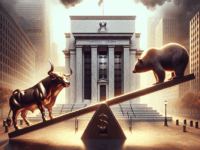Investment News
23h
Trump's New Tariffs and Nvidia's AI Expansion Impact Markets
- President Trump's new tariffs on Mexico and the EU, coupled with Nvidia's AI expansion, are reshaping global markets.

1d

Xi's Warning on AI and EVs; SPACs Resurge in 2025
Chinese President Xi Jinping cautions against over-investment in AI and EVs, while SPAC activity sees a resurgence in 2025.
2d

US Stocks Surge Amid Strong Earnings and Economic Data
U.S. stock markets reached record highs on July 17, 2025, driven by robust corporate earnings and positive economic indicators. The S&P 500 closed at 6,297.36, while the Nasdaq Composite ended at 20,884.27. Notable earnings from companies like PepsiCo and United Airlines bolstered investor confidence. Additionally, Taiwan Semiconductor Manufacturing Company (TSMC) reported record profits, highlighting the strength of the semiconductor sector. These developments underscore the resilience of the U.S. economy and the pivotal role of the technology sector in driving market gains.
3d

US Tariffs and UK Deregulation Reshape Financial Sectors
Recent U.S. tariff hikes have intensified inflation concerns, while the UK's 'Leeds Reforms' aim to boost London's financial sector by easing regulations.
4d

US Tariffs and Nvidia's China Sales Resumption Impact Markets
Recent US tariff announcements and Nvidia's resumption of chip sales to China are significantly influencing global markets, with investors closely monitoring these developments.
23h
Trump's Tariff Plans Shake Markets; 3M Warns of Impact
- President Trump's consideration of new EU tariffs unsettles markets; 3M anticipates significant tariff-related challenges ahead.

1d

Trump's Tariff Plans Shake Markets; Netflix Shares Dip
President Trump's consideration of new EU tariffs unsettles markets; Netflix shares decline despite strong earnings.
2d

Record Highs Amidst Strong Earnings and Buyback Plans
U.S. stock indices reached new record highs on July 17, 2025, driven by robust corporate earnings and significant buyback plans. PepsiCo's impressive quarterly results and a projected $1 trillion in corporate stock repurchases bolstered investor confidence.
3d

Trump's Fed Remarks and ASML's Outlook Stir Markets
President Trump's comments on Federal Reserve Chair Powell and ASML's growth warning create market volatility.
4d

Inflation Rises to 2.7%; Nvidia Resumes China Chip Sales
Inflation rose to 2.7% in June, impacting interest rate expectations. Nvidia plans to resume H20 AI chip sales to China, boosting its stock.






